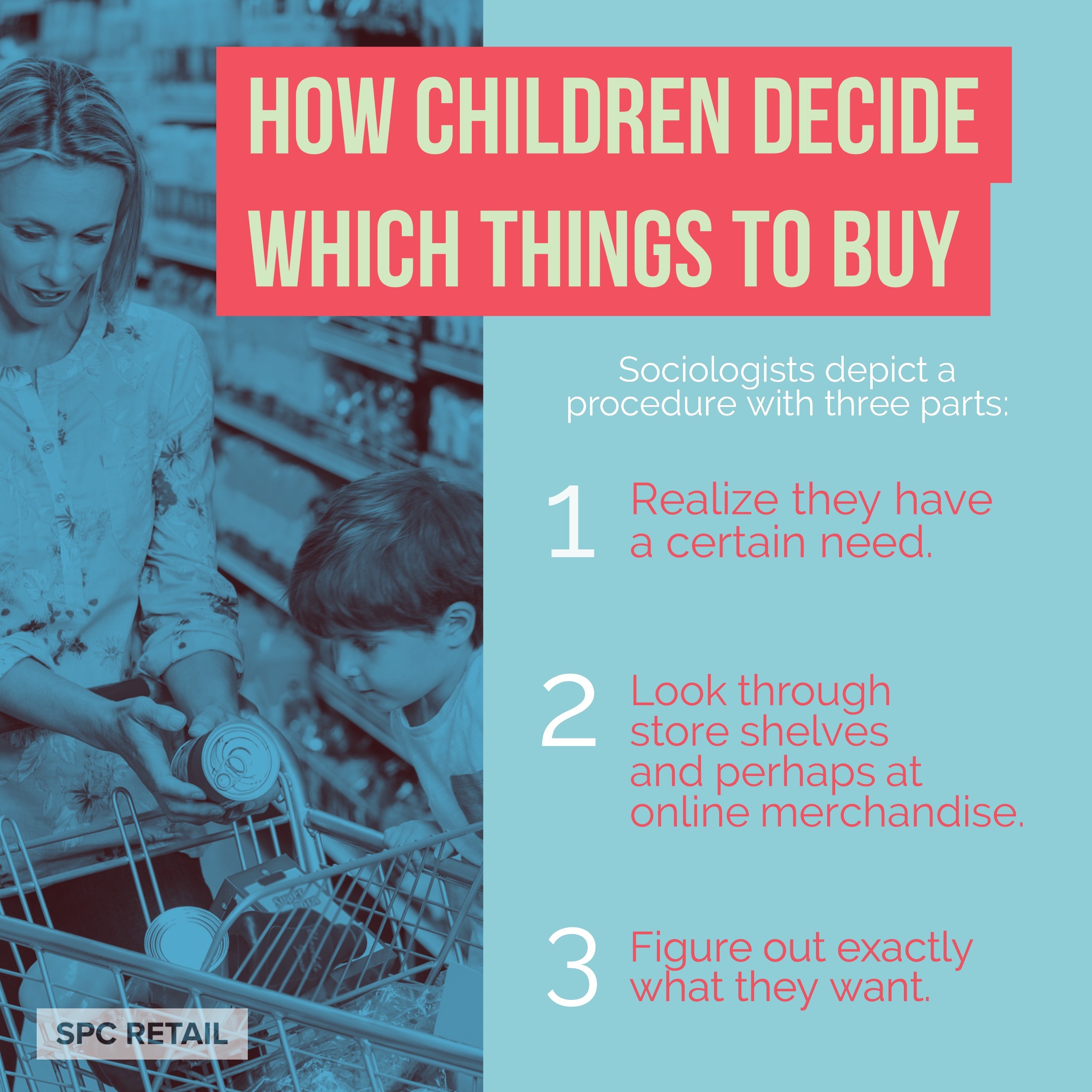The Influential Power of Children on Purchasing Behavior
Believe it or not, children have at least some say in as many as four out of five American household purchases. Their impact tends to be especially strong on food and personal care items. Kids often choose their own clothes as well.
You should keep children and their “pester power” in mind when you’re laying out and merchandising your retail store.
Your Youngest Customers
Children often learn how to become consumers — that is, how to look at products, compare them and decide which to buy — by observing family members. In fact, kids as young as 5 frequently know the items and even the brands they want their parents to pick up.
At the age of 7 or 8, children typically becomes aware that advertisements are biased presentations designed to influence their thinking. And when kids are around 8 years old, they have a deep enough understanding of the purchasing process to evaluate products in a rational way.
To describe how children decide which things to buy, sociologists depict a procedure with three parts. First, they realize they have a certain need. They then look through store shelves and perhaps at online merchandise. Finally, they figure out exactly what they want.
Catering to Kids
Given how savvy young shoppers can be, your store should offer them rewarding experiences. To begin with, put your kids’ merchandise on low shelves so they can see it easily.
Many retailers are careful to aim their food displays at children. They make sure that products like candies and sugary cereals are right at children’s eye levels.
Train your sales representatives to answer children’s questions in a crisp, friendly and thorough manner. Kids can usually sense when grownups are patronizing them.
You can cross-sell to children too. Group related items closely together — coloring books and markers, for instance, or knee pads and bicycle helmets. When their parents buy one thing, children might ask for an associated product.
Above all, make your in-store displays cheerful and fun, even as they drive home the message that “everyone needs these items.” Bright, colorful photos of children enjoying a particular product will get kids to envision themselves using it at home. Interactive displays with lights and sounds can be impactful as well.
In-Store Ads That Are Safe and Inclusive
Today’s kids are definitely accustomed to advertising. A child who watches two hours of television every day will see about 20,000 commercials in one year.
Nevertheless, marketing to children involves moral concerns. One way for your in-store ads to address those worries is to have them promote healthy behaviors as well as products. For example, they might depict kids smiling as they read or exercise. Thus, those materials would be doing a social good.
Also, try marketing to whole families. Show parents and children in your displays instead of just kids. Family-targeted advertising often leads to more sales than the child-targeted kind. Parents don’t want to feel like they’ve been left out of the equation entirely.
Keep in mind that parents will check out all the store displays their kids look at. Therefore, include some statistics, safety information or other content they’ll find useful and impressive.
The children who enter your store hold the fate of your business in their little hands. In shops all over the world, they’re the real decision-makers. If you find ways to grab their attention, engage their senses and delight them, your revenue streams should delight you in return.






